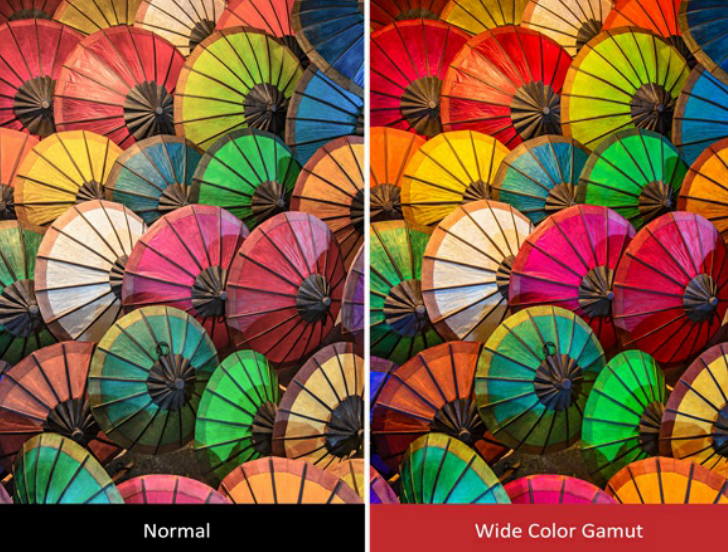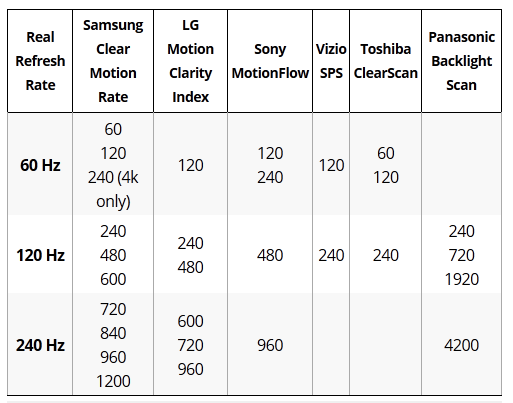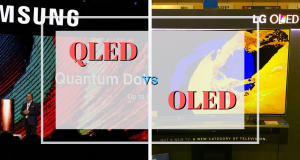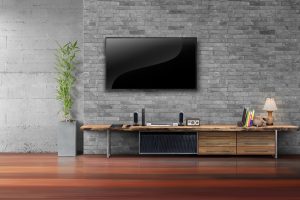Best LED TVs in India by Size in 2024 Buyer's Guide
One thing that always attracts us when we enter any electronics store is the sight of flashing TVs. TVs with an eclectic mix of size and brand are positioned inside a showroom to grab the eyeballs of the passerby. The more advanced the technology, the more is the crowd around a particular model. Upon doing our thorough research on the best TV in India, we discovered what consumers look for while buying a TV. Size, technology, and price are the three most important things that the consumer vet before buying.
In this article, we will apprise you with the best LED TV in India in 2024 among the caboodle of the latest SMART TVs based on two important aforementioned parameters–size and price. These models are based on our thorough research and are handpicked after careful examination and evaluation. We will also talk about top TV brands that are available in India. We will also give you valuable tips and tricks that would help you to make a smarter TV buying decision. For the Buying Guide, click: here.
Best LED TV in India in 2024
Here is the list of some of the best TV models on Amazon.
Good 32 inch TVs on Amazon:
 Samsung 80 cm (32 Inches) Wondertainment Series HD Ready LED Smart TV UA32T4340BKXXL (Glossy Black)
Samsung 80 cm (32 Inches) Wondertainment Series HD Ready LED Smart TV UA32T4340BKXXL (Glossy Black)
 Samsung 80 cm (32 inches) Wondertainment Series HD Ready LED Smart TV UA32TE40AAKBXL (Titan Gray)
Samsung 80 cm (32 inches) Wondertainment Series HD Ready LED Smart TV UA32TE40AAKBXL (Titan Gray)
 OnePlus 80 cm (32 inches) Y Series HD Ready LED Smart Android TV 32Y1 (Black)
OnePlus 80 cm (32 inches) Y Series HD Ready LED Smart Android TV 32Y1 (Black)
 OnePlus 80 cm (32 inches) Y Series HD Ready Smart Android LED TV 32 Y1S (Black)
OnePlus 80 cm (32 inches) Y Series HD Ready Smart Android LED TV 32 Y1S (Black)
 LG 80 cm (32 inches) HD Ready Smart LED TV 32LM563BPTC (Dark Iron Gray)
LG 80 cm (32 inches) HD Ready Smart LED TV 32LM563BPTC (Dark Iron Gray)
 Mi 80 cm (32 inches) Horizon Edition HD Ready Android Smart LED TV 4A | L32M6-EI (Grey)
Mi 80 cm (32 inches) Horizon Edition HD Ready Android Smart LED TV 4A | L32M6-EI (Grey)
Good 43 inch TVs on Amazon:
 Samsung 108 cm (43 inches) Wondertainment Series Full HD Smart LED TV UA43TE50FAKXXL (Black-Hair Line)
Samsung 108 cm (43 inches) Wondertainment Series Full HD Smart LED TV UA43TE50FAKXXL (Black-Hair Line)
 OnePlus 108 cm (43 inches) Y Series Full HD Smart Android LED TV 43 Y1S (Black)
OnePlus 108 cm (43 inches) Y Series Full HD Smart Android LED TV 43 Y1S (Black)
 MI 108 cm (43 inches) 5A Series Full HD Smart Android LED TV L43M7-EAIN (Black)
MI 108 cm (43 inches) 5A Series Full HD Smart Android LED TV L43M7-EAIN (Black)
 Redmi 108 cm (43 inches) 4K Ultra HD Android Smart LED TV X43 | L43R7-7AIN (Black)
Redmi 108 cm (43 inches) 4K Ultra HD Android Smart LED TV X43 | L43R7-7AIN (Black)
 Redmi 108 cm (43 inches) Android 11 Series Full HD Smart LED TV L43M6-RA/L43M7-RA (Black)
Redmi 108 cm (43 inches) Android 11 Series Full HD Smart LED TV L43M6-RA/L43M7-RA (Black)
 Sony Bravia 108 cm (43 inches) 4K Ultra HD Smart LED Google TV KD-43X74K (Black)
Sony Bravia 108 cm (43 inches) 4K Ultra HD Smart LED Google TV KD-43X74K (Black)
Good 49/50 inch TVs on Amazon:
 Redmi 126 cm (50 inches) 4K Ultra HD Android Smart LED TV X50 | L50M6-RA (Black)
Redmi 126 cm (50 inches) 4K Ultra HD Android Smart LED TV X50 | L50M6-RA (Black)
 Samsung 125 cm (50 inches) Crystal 4K Series Ultra HD Smart LED TV UA50AUE60AKLXL (Black)
Samsung 125 cm (50 inches) Crystal 4K Series Ultra HD Smart LED TV UA50AUE60AKLXL (Black)
 MI 125.7 cm (50 inches) 5X Series 4K Ultra HD LED Smart Android TV L50M6-ES (Grey)
MI 125.7 cm (50 inches) 5X Series 4K Ultra HD LED Smart Android TV L50M6-ES (Grey)
 OnePlus 126 cm (50 inches) Y Series 4K Ultra HD Smart Android LED TV 50Y1S Pro (Black)
OnePlus 126 cm (50 inches) Y Series 4K Ultra HD Smart Android LED TV 50Y1S Pro (Black)
 Vu 126 cm (50 Inches) Premium 4K Series Smart Android LED TV 50PM (Grey)
Vu 126 cm (50 Inches) Premium 4K Series Smart Android LED TV 50PM (Grey)
 VU 126 cm (50 inches) The GloLED Series 4K Smart LED Google TV 50GloLED (Grey)
VU 126 cm (50 inches) The GloLED Series 4K Smart LED Google TV 50GloLED (Grey)
Good 55 inch TVs on Amazon:
 Redmi 139 cm (55 inches) 4K Ultra HD Android Smart LED TV X55 | L55M6-RA (Black)
Redmi 139 cm (55 inches) 4K Ultra HD Android Smart LED TV X55 | L55M6-RA (Black)
 Sony Bravia 139 cm (55 inches) 4K Ultra HD Smart LED Google TV KD-55X74K (Black)
Sony Bravia 139 cm (55 inches) 4K Ultra HD Smart LED Google TV KD-55X74K (Black)
 Samsung 138 cm (55 inches) Crystal 4K Series Ultra HD Smart LED TV UA55AUE60AKLXL (Black)
Samsung 138 cm (55 inches) Crystal 4K Series Ultra HD Smart LED TV UA55AUE60AKLXL (Black)
 Samsung 138 cm (55 inches) Crystal 4K Neo Series Ultra HD Smart LED TV UA55AUE65AKXXL (Black)
Samsung 138 cm (55 inches) Crystal 4K Neo Series Ultra HD Smart LED TV UA55AUE65AKXXL (Black)
 MI 138.8 cm (55 inches) 5X Series 4K Ultra HD LED Smart Android TV L55M6-ES (Grey)
MI 138.8 cm (55 inches) 5X Series 4K Ultra HD LED Smart Android TV L55M6-ES (Grey)
 OnePlus 138 cm (55 inches) Y Series 4K Ultra HD Smart Android LED TV 55Y1S Pro (Black)
OnePlus 138 cm (55 inches) Y Series 4K Ultra HD Smart Android LED TV 55Y1S Pro (Black)
Good 65 inch TVs on Amazon:
 Redmi 164 cm (65 inches) 4K Ultra HD Android Smart LED TV X65 | L65M6-RA (Black)
Redmi 164 cm (65 inches) 4K Ultra HD Android Smart LED TV X65 | L65M6-RA (Black)
 Sony Bravia 164 cm (65 inches) 4K Ultra HD Smart LED Google TV KD-65X74K (Black)
Sony Bravia 164 cm (65 inches) 4K Ultra HD Smart LED Google TV KD-65X74K (Black)
 OnePlus 163.8 cm (65 inches) U Series 4K LED Smart Android TV 65U1S (Black)
OnePlus 163.8 cm (65 inches) U Series 4K LED Smart Android TV 65U1S (Black)
 VU 164 cm (65 inches) The GloLED Series 4K Smart LED Google TV 65GloLED (Grey)
VU 164 cm (65 inches) The GloLED Series 4K Smart LED Google TV 65GloLED (Grey)
 Vu 164 cm (65 inches) The Masterpiece Glo Series 4K Ultra HD Smart Android QLED TV 65QMP (Armani Gold) (2022 Model) | Built in 4.1 Speaker
Vu 164 cm (65 inches) The Masterpiece Glo Series 4K Ultra HD Smart Android QLED TV 65QMP (Armani Gold) (2022 Model) | Built in 4.1 Speaker
If you have any questions about any model or brand, feel free to put your question in the comments section.
If you are looking for the best-LED TV in India that fits your budget, then you can look at these pages on our website:
If you are looking for the best-LED TV in India by size, then you can look at these pages on our website:
Best 40-43 inch LED TV in India
Best 49-55 inch LED TV in India
Best Television / TV Brands in India in 2024
These are considered premium brands in India. These brands have the latest and greatest technology available in the market. Japanese brand Toshiba or Dutch brand Philips is also good, but if you are looking for decent value for money brands, you may look at the new and upcoming brands like Vu LED TV, Sanyo LED TV, and Thomson LED TV. Technology-wise the premium brands are far superior, but they are expensive. In general, most brands in India do not offer a warranty of more than 1 year on TVs, and bad power quality does damage TVs in several places. Thus a lot of people prefer to go for the value for money brands. To check our analysis of various brands, you can check our link: Best LED TV brand in India.
If you are looking for reviews of various brands, you can check our brand review section over here: Link. Or you can click on the specific brand name mentioned above.
Things to look for while buying a TV
Size of the TV
This is probably the most important factor which significantly drives the buying behavior of customers who are looking to buy a new TV. The sheer size of a TV is capable of altering a customer’s decision. Many people have an emotional/psychological connection with the size of the TV. A bigger size TV is considered a sign of social status by many. And due to this many people choose to buy an oversized TV.
To illustrate the effect the size of TV has on the viewing experience, let us look at an example. If you buy a large-sized TV (above 40 inches), then there is a certain distance at which you have to sit from the TV to have a comfortable view. Otherwise, the objects on the screen will look too large, and the viewing experience will be poor.
So it is important to buy such a TV which is best suited to your room. Below is a table that illustrates the ideal distance at which you should sit from the TV to have a nice viewing experience.
| Screen Size | Ideal Viewing Distance Range | ||
| HD Ready | Full HD | 4K | |
| 24 inch | 5.0-8.5 feet | ||
| 28 inch | 5.8-9.9 feet | ||
| 32 inch | 6.7-11.4 feet | 4.0-6.7 feet | |
| 40 inch | 5.0-8.3 feet | 3.3-5.0 feet | |
| 43 inch | 5.4-9 feet | 3.6-5.4 feet | |
| 50 inch | 6.3-10.4 feet | 4.2-6.3 feet | |
| 55 inch | 6.9-11.5 feet | 4.6-6.9 feet | |
| 60 inch | 5.0-7.5 feet | ||
| 65 inch | 5.4-8.1 feet | ||
| 75 inch | 6.3-9.4 feet | ||
We have simple advice for you for those who do not even want to take the pain of confirming the right TV size based on the distance from watching the TV. You can opt for a 32-43′ TV for your bedroom and go for 55′ or more for your hall/living room. If your hall room size is humongous large, 75’ or even 100’ TV will do wonders.
Resolution
When we are talking about the screen resolution, or in other words, the clarity of the TV, then the number of pixels matters a lot. The more the number of pixels, the more is the graphical information captured and displayed to the viewer, and consequently, more is the clarity of the TV. In India, three types of screen resolutions in TVs are available. These are:
a) HD Ready (1280 x 720 or 720p)
b) Full HD (1920 x 1080 or 1080p, available only in 32 Inches and above TV models)
c) Ultra High Definition (3840 × 2160, 4K, UltraHD, available only in 42 Inches and above TV models)
d) Ultra HD 8K(7680 × 4320, 8K, Ultra HD, available only in 65 Inches and above TV models)
Though often used interchangeably, there is a slight difference between a true 4K and 4K UHD. UHD has a resolution of 3840 x 2160, precisely twice that of Full HD and thrice that of simply HD. On the other hand, the true 4K has a resolution of 4096 x 2160. So, rather than being simply 4x of Full HD, 4K derives its name from measuring 4000+ pixels on its longest side. But most of the TV with 3840 x 2160 resolution are marketed as 4K or 4K UHD TV.
As you go from HD Ready to Ultra High Definition, the number of pixels on the screen increases, meaning that the display clarity increases. But one should keep in mind that beyond a certain distance from the TV, all the various versions of HD TVs appear to be the same (or there is little noticeable difference from an HD-ready TV to a 4K variant). The difference between these variants starts becoming noticeable as one starts moving closer to the screen. The size is also an important factor while choosing a resolution. A 32 inch is the entry-level size for Full HD TVs, but at that size, the difference between an HD Ready and Full HD is not much. Similarly, 42-43 inches is the entry-level size for UHDs, and thus at this size, the difference will not be much between a Full HD and 4K.
Display Panel
The most significant differentiating factor between a premium and non-premium TV lies in the display panel. We have already moved from bulky CRT TVs to slim LED TVs. In LED, manufacturers have found a big scope for improvement. Organic Light-Emitting Diode (OLED) display panels are borne out of that vision. OLED is the best display panel you can get in a TV, but you’ll need to shell out a couple of lakh to buy a giant TV with OLED technology. OLEDs are Organic Light Emitting Diode panel TVs that use an organic material that glows when electricity is passed through them. On the contrary, conventional LED TV displays comprise of LCD screen that needs an LED backlight to make the colors visible. When we say LCD screen, it should not be confused with old LCD TVs, which used much older technology that uses a fluorescent backlight and not the LED. The most prominent difference between LED and OLED is that the OLED lights up individual pixels while the standard LED (non-OLED) displays light up the complete screen. This difference helps to get the real contrast because it’s possible to reproduce true blacks as they can be completely turned off. Also, it has a massive lead over conventional LEDs in response time because OLEDs are touted to be 1,000 times faster, implying there would be no discernible blur with fast-moving images. LG is presently a leader in OLED technology, and it also happens to OLED panel suppliers to other big TV manufacturers.
LG and Samsung are arch-rivals. So if LG is taking the world by storm with OLED, Samsung has come with a panel technology that would attract elite TV buyers. To take on OLED, Samsung has its own QLED technology, which sounds quite similar to the former. QLEDs are Quantum-dot LEDs that are nothing but microscopic molecules (nano-sized semiconductor crystals), when hit by the incident light, would emit their own differently colored light. They possess good light-absorbing and emitting capacity, making them a great choice for vibrant pictures and energy-efficient. Though QLED TVs are definitely better than ordinary LED, OLED still rules the roost. These displays are best suited for individuals who not only want a great display but also care for the environment (as they are highly energy efficient)
HDR (High Dynamic Range) and WCG (Wide Color Gamut)
A few years back, when 4K was new, all the limelight was on the resolution. Marketers and salespeople would talk about a bigger 4K TV grandiosity, how it compares to Full HD or HD, or the rudimentary SD definition. However, as the economy of scale has started to picture in, the prices of 4K TV plunged significantly. TV marketers are slowly shifting their technical catchphrase from 4K to HDR and WCG. Wide color gamut (WCG) is often bundled with HDR. Though mostly concurrent, they aren’t precisely intrinsically interlinked. HDR increases the dynamic range of the picture (with brighter brights and darker darks), WCG improves on the color reproduction–redder reds, bluer blues, greener greens, etc. In short, HDR improves picture clarity quantitatively while WCG does so qualitatively.
The single biggest change that has happened in recent times in TV Picture technology is the introduction of HDR or High Dynamic Range in TV. It relates to something called “contrast.” Contrast ratio is a term that one might hear when looking at several models of TVs. The contrast ratio is a measure of the luminance of the TV screen. It is the ratio of the brightest color’s brightness (i.e., white) to the darkness of the darkest color (i.e., black) on the screen. It is an indicator of the vibrance (or brilliance) of the screen. So a high contrast ratio is usually preferred. For a deeper understanding of HDR, read our article here.

WCG, on the other hand, lets TV display more colors. Not just more colors but more real-life-like colors which we see with our naked eye. So, if you are getting a TV with HDR and WCG, you can rest assured of amazing picture quality. We have a dedicated article explaining WCG here.
HDR is pretty much on the path of becoming standard, especially in the 4K TVs; there is also a start of a virtual HDR format war. The TV manufacturers are toiling hard to bring their own HDR. Presently there are at least four different HDR formats, with more to come soon. Below is the key characteristic of each HDR format:
- HDR10: This is the most commonly used HDR format and supports up to 10 bit of display panel. This implies it can display a maximum of 1 billion colors. Also, metadata processing is static. Companies often tag their HDR10 format as HDR Pro or HDR Premium. They are nothing but HDR10.
- Dolby Vision: This is arguably the best HDR format. It supports a 12 bit display panel implying it can display mind-boggling 68 billion colors. Also, metadata processing in this HDR is dynamic. For simplicity, the dynamic is better than static. For more info on the difference between the two, check the link.
- HDR10+: This is a recently released HDR format that is an upgrade over HDR10. It supports dynamic metadata processing but supports 10 bit display panel and not 12 bit like Dolby Vision.
- HLG: Hybrid Log-Gamma (HLG) format HDR is specifically meant for broadcasting live channels in HDR. Presently in India, no channel brings out live channels with HDR support.
HDR and WCG are another step towards improving the aesthetics of watching content on a big screen. But bear in mind that HDR is an end-to-end technology. Every step from creation to reproduction on the TV screen in your home needs to be HDR-compatible with all that in place WCG and HDR will surely enhance the TV viewing experience.
Refresh rate
The video playing on a TV is actually a series of images displayed at a very high rate so that they appear to move and give our eyes a sensation of moving objects. So refresh rate determines how quickly the images are updated in one second (or are refreshed in one second) on the screen. If a TV has a high refresh rate, then the moving of the images on the screen will be fast and smooth. In simple words, the video quality will be enhanced. (Please note that refresh rate is different from frame rate).

So if you primarily intend to watch high-action, fast-moving objects on your TV (like racing or high graphics games), you should go for a TV with a high refresh rate as the images would not get blurred. But if you want to watch regular stuff (like TV soaps, movies), then the standard refresh rate of 50 Hz would be sufficient for you.
Different manufacturers use different terminologies (in terms of mentioning the refresh rate) to promote their TVs. Some examples are the LG Motion Clarity index, Samsung Clear Motion rate, Toshiba ClearScan, Sony Motion Flow, etc. In these patented technologies, the refresh rate that is mentioned is sometimes bloated. So a manufacturer can label their TV as having a refresh rate as high as 1000 Hz, but effectively the refresh rate is no more than 200 Hz.
It is important to know the aspect of “fake refresh rate” because some people get misguided by the high value of the refresh rate for a particular brand, which, when normalized, is effectively lesser than the value mentioned in the specifications of the TV.
Remote
Modern remote bundles with smart TVs are minimalistic. They usually have a few channel control buttons with volume adjustment and voice control if it comes with Google Voice assistant. We recommend going for a Bluetooth remote instead of an ordinary one because you can control the TV from any part of the room with a Bluetooth remote. In infrared, you would specifically need to point towards the TV. We have observed many cheap smart TVs don’t come with a mute button. Be watchful of that too. Remotes it high-end TV also comes with a zooming button, which lets you zoom any part of the screen. Ardent sports lovers would truly admire this feature. If you prefer to use your TV late night with lights off, try to go for a TV model with LED-backlit to make it convenient to operate the TV in the dark. Additionally, you can buy a complete functionality keyboard-like Bluetooth remote if your smart TV comes with Bluetooth connectivity.
Sound (RMS Output)
Another important aspect nowadays is the sound quality of TVs. If you look at some models, you shall find that an RMS power rating is given to TVs. For example. A TV with 5W + 5W RMS would mean that both speakers’ power output is 5W individually. A Higher RMS rating generally translates to louder volume. However, it does not mean that a higher RMS-rated TV will be “better-sounding” more than a TV having a lower RMS rating.
Many premium TVs these days come with a dedicated soundbar with enhanced sound technology like Dolby or DTS. Harman Kardon is one of the best-inbuilt speaker sets bundled with the TV. The typical arrangement of Harman Kardon speakers is that it has four separate speakers with dual amplifiers. This helps in taking the entertainment quotient higher. The front design of these speakers is such that they deliver sound with minimum losses.
Similarly, on a software front, it is best to go with the Dolby Digital sound system. The strength of Dolby Digital lies in compressing the size of multichannel audio files without disturbing the sound quality. Dolby Digital takes cues from how the human ear processes sound and implements it in its functioning. It provides five bandwidth channels: front right, front left, center, surround right, and surround left for an amazingly true sound feel. Thus, it expands right and left conventional stereo channels to give listeners enveloping 360 degrees of sound, alternately the “surround sound.” If all-around sound (3D sound) takes you to another world, go for a TV with Dolby.
Some TVs these days also have a subwoofer or soundbar integrated into them. In case you are looking for better sound output, do look for subwoofer or soundbar integration.
IPS vs. VA panel
You must have observed that when viewed from different angles, the colors in the LED TV change. That is because of the screen panel. There are two main types of panels available in the market: IPS panels and VA panels.
IPS panels are better in terms of viewing angle, i.e., watching TV sitting at different angles with the TV, whereas VA panels are not found to be that good in terms of viewing angle. It means that a TV with a VA panel does not give you much freedom regarding the viewing angle. So if you have a bigger room, then an IPS panel would offer a better angle. Also, IPS panels are tougher than VA panels and are found to be more durable. However, in terms of color reproduction, VA panels are better, so brands like Sony and Samsung still use VA panels.
Picture Engine
Companies provide different picture engines to deal with the ever-increasing pixel count and deliver crisp & clear pictures. This should be essential for users who intend to do gaming or watch action-packed movies on their TV. X Reality Pro engine on Sony 4K TV upscales every pixel to provide better clarity. It improves picture clarity by adding the missing colors, luster, vibrancy, texture, and details to the given picture. LG, on the other hand, provides Triple XD an engine that works on three important parameters—contrast, color, and noise. Triple XD engine enhances picture quality by increasing black levels and brightness, altering color tones, and provides analog & MPEG noise reduction algorithms. Though the premium range of TVs offers a stunning 4K resolution, most of the sources, especially in India, don’t provide native 4K content. This means there is the need to upscale them when aired on the TV, but then they risk appearing blurry or grainy. To cope with this, make sure the picture engine of the TV comes with the capability of upscaling low-resolution content.
Smart TV
If you decide to buy a smart TV, you will come across many operating systems (OS) just like you find them on your laptops and smartphones.
Android is the most popular operating system for Smart TVs, just like the smartphone with nearly half of the market share. The best part of Android TV OS (Android 6.0 and above) is that they come with Google Voice assistant. This means your TV can easily search any content you say, as Google Voice is the best in recognizing different accents accurately. Moreover, if you are an Android user, you would already know that thousands of apps are on the Play Store. However, there is a slight catch with Android TV OS. Though many smart TV says Android OS, they are not officially certified. It means that Play Store might be absent altogether. So if you want the official Play Store to go for Android-certified TV, in case you are a tech geek, you can do without an Android-certified TV by sideloading APK apps on Smart TV.
LG’s WebOS is the second most popular TV OS. This OS is built around the taskbar, which runs at the bottom of the screen. First introduced in 2014, UI hasn’t changed much, but there have been some gradual improvements over the years matching the need of the hour. The main advantage of WebOS is that it’s exceptionally user-friendly, stable, fast, least prone to slowdowns. However, on the downside, it lacks broader ecosystem apps that Google can offer. 2018 onwards, LG has added ThinQ AI in its premium Smart TVs, which allows for smart search, multiple windows, and magnification on live screen functionalities.
Just like LG, Samsung hosts its operating system, Tizen, in its Smart TVs. Samsung calls it SmartHub, and its UI draws a lot of inspiration from webOS, especially in the way it uses overlaid menu comprising big colorful icons.
There is another popular TV OS, but of late, its development is on the decline. It is Firefox OS and presently shipped with selected Panasonic appliances. Though it’s one of the clean, fresh and easy TV systems around, opting for it is a little dicey since Mozilla Foundation has confirmed its withdrawal from this segment. This means future support and development in the TVs powered by Firefox OS is apparently in jeopardy.
Now, if you are really on a tight budget and cannot afford a smart TV but still crave one, we have a solution. If your TV comes with an HDMI port, you can convert your idiot box into a smart TV using plug-and-play devices like Google Chromecast, Amazon Firestick, and Apple Smart TV. They come with many OTT apps and provide you with a full dose of entertainment like a usual smart TV.
Conclusion
In this slightly longish post, we have tried to explain the different things you need to look at while buying a new television. We have also tried to list down some new technologies that are there in the market. If you still have questions, please feel free to post them in the discussion section below, and we will be happy to help you. Also, do check these articles on our website before making a decision:
Different Types of Local Dimming Technologies in LED TVs in India
OLED vs QLED: All You Need To Know About Premium TV Display Technologies
What is Wide Color Gamut (WCG) and how it improves picture quality?
What is HDR and how it impacts TV Picture Quality?
Latest TV Technologies in India
About the Author:
Abhishek Jain is an Alumnus of IIT Bombay with almost 10 years of experience in corporate before starting Bijli Bachao in 2012. His passion for solving problems moved him towards Energy Sector and he is keen to learn about customer behavior towards Energy and find ways to influence the same towards Sustainability. More from this author.


































